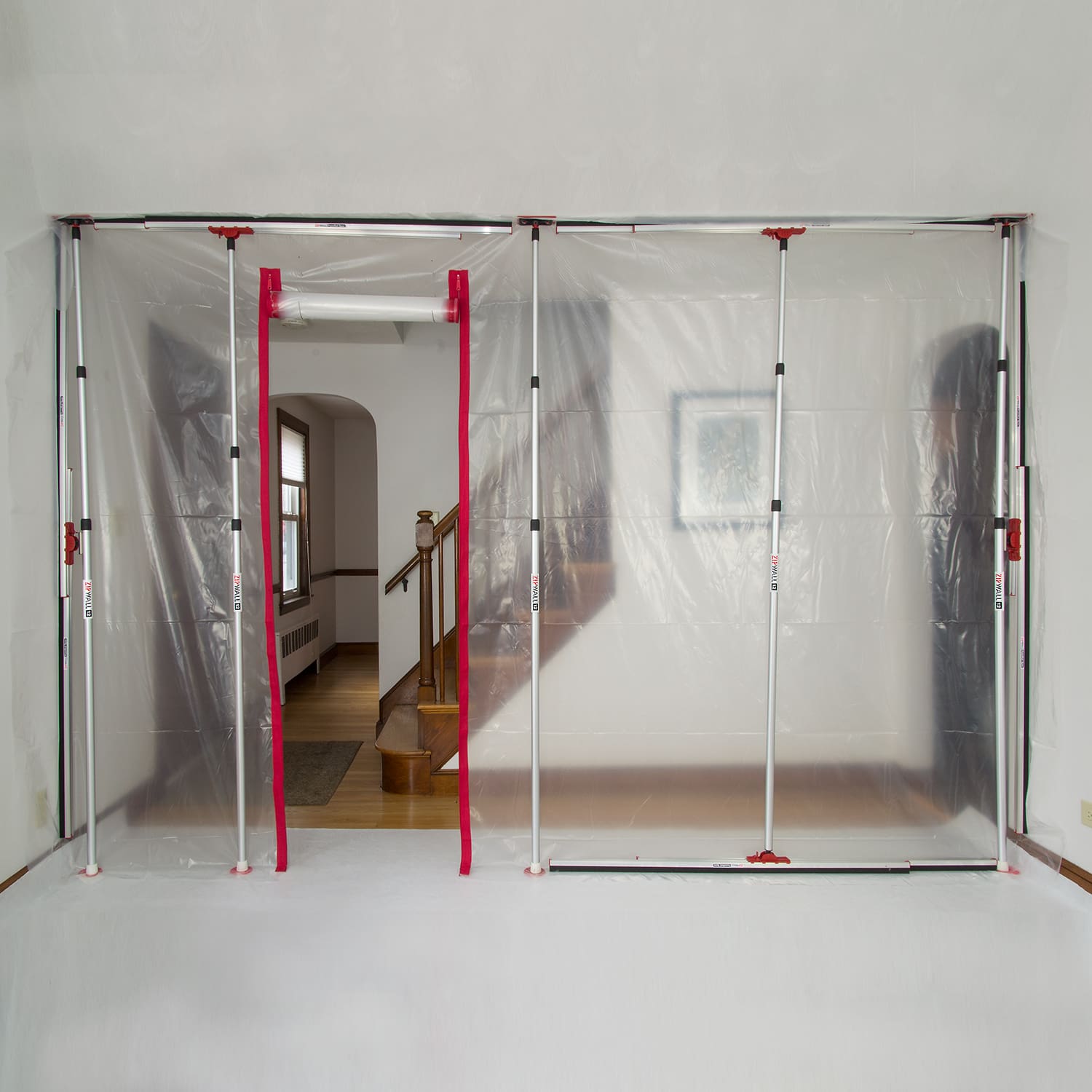Surface Protection
How will my home be protected during construction?
One of our primary objectives when meeting with a new client, is building trust. Will we listen to their ideas and intentions, will we establish a fair and appropriate investment level for their project, and will we respect their home and lifestyle? The first step in respecting their home is ensuring that we take precautions to safeguard the surfaces in their home.
During the construction process there will be tradespeople coming in and out of your home. Some of the processes that they undertake will create dust. Going in and out of the work area creates opportunities for tracking dust and debris in and out of the house. Airflow within the house can distribute the dust and allow it to settle in the living areas of the home. The following steps are taken to minimize these events.
Regardless of how much effort is put into dust abatement, there will be some dust that travels into living areas of the project. Once construction is completed, it is always a good idea to plan on performing a deep clean. Whether you do that yourself, have you cleaning people do it or have your contractor perform this task is up to you. Most contractors have someone available to perform this service and can include it as part of the project. Some clients are particular about cleaning and prefer to do it themselves and others either have regular cleaning done or reach out to a professional service to have carpets, furniture and general cleaning completed once the project is completed.
Dust Abatement
We utilize dust barriers to limit the amount of construction dust outside of the work area. Small single room projects get a plastic barrier at the doorway and larger projects are encapsulated by a barrier wall.
We use heavy plastic to create these barriers. In a single room the doorway is enclosed with plastic and specially designed zippers are adhered to the plastic to allow access to the work area. Another option that we use is double barrier weighted panel. I single panel is installed across the opening then a single slit is cut in the center from top to floor. A second panel is installed inside of that panel and a piece of lumber is rolled into the bottom of it. The second panel is pushed aside to allow access then falls back into place after you enter the room.
Larger areas utilize a series of support poles that keep the plastic tight to the ceiling and support the plastic along the area between the work area and the living area. A door opening similar to the smaller projects is placed in the barrier wall.
Additional mechanical systems can be added to further minimize dust accumulation – a vacuum system can be attached to cutting or sanding tools and negative air pressure filtration systems can be utilized. Negative air pressure systems draw air from the interior of the home and vent it out of an opening (typically a window covered with plastic which has a hole cut into it for the vent hose).




Surface Protection
Surface protection minimizes opportunities for damage due to footprints, scrapes and impacts. Traffic in and out of the home, particularly in inclement weather, often includes dirt and debris. Sliding items across a surface can leave marks and dropped items can damage existing or recently installed surfaces.
On walkways to and from the work area, carpeted areas get CarpetShield and solid surfaces get Ramboard or equivalent. CarpetShield is an adhesive backed plastic that provides protection from dirt and debris from soiled shoes. Ramboard is a thick kraft paper (imagine paper towel core 10x thicker) that is taped down. It can also be used in showers, on tile floors and on countertops. Ramboard also makes a stair protection product that covers the tread and riser on stairs. CarpetShield also makes a product for solid surfaces called Multi Surface Film. It is used for high traffic areas across tile or hardwood floors where footprints are a concern but scrapes and impact protection is not the primary concern. This is also a great product to use on acrylic tubs and shower pans to protect from scratches.
Regardless of how much effort is put into dust abatement, there will be some dust that travels into living areas of the project. Once construction is completed, it is always a good idea to plan on performing a deep clean. Whether you do that yourself, have you cleaning people do it or have your contractor perform this task is up to you. Most contractors have someone available to perform this service and can include it as part of the project. Some clients are particular about cleaning and prefer to do it themselves and others either have regular cleaning done or reach out to a professional service to have carpets, furniture and general cleaning completed once the project is completed.
Here are some of the resources for products we typically use to provide dust and surface protection:
Carpet Protection: https://www.surfaceshields.com/products/carpet-protection/
Surface Protection: https://www.surfaceshields.com/floor-protection/multi-surface/
Floor Protection: https://www.ramboard.com/product/ram-board/
Dust Abatement: https://www.zipwall.com/shop/dust-barrier-poles/
Dust Abatement doors: https://www.zipwall.com/product/zipdoor-standard-door-kit/#description